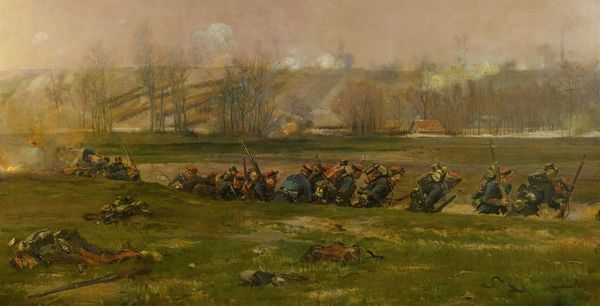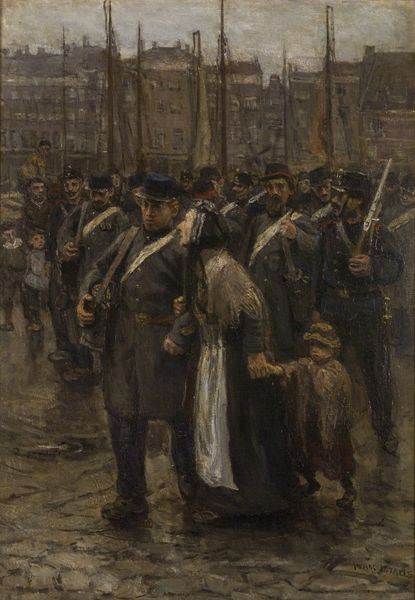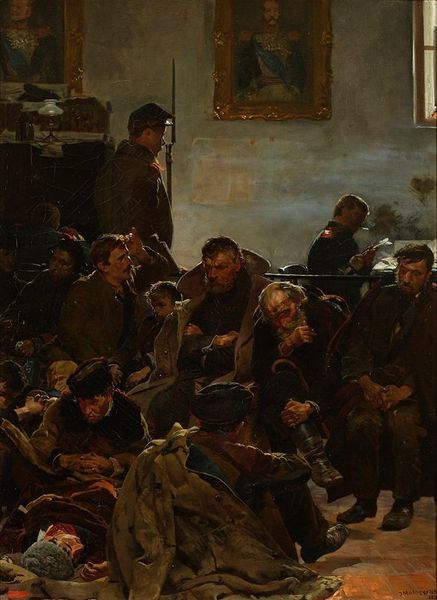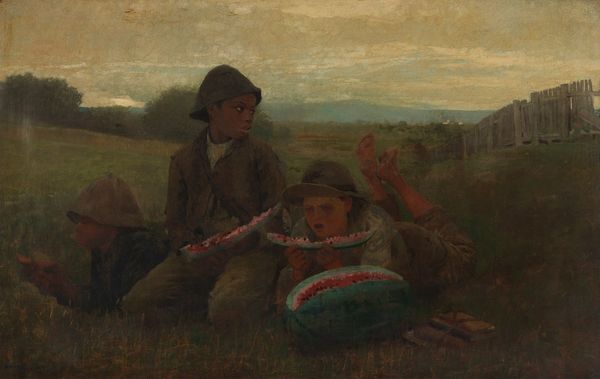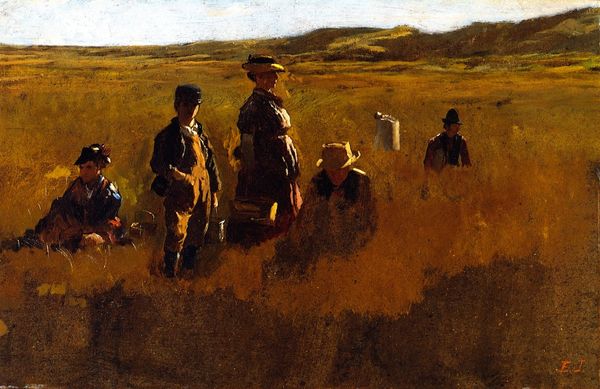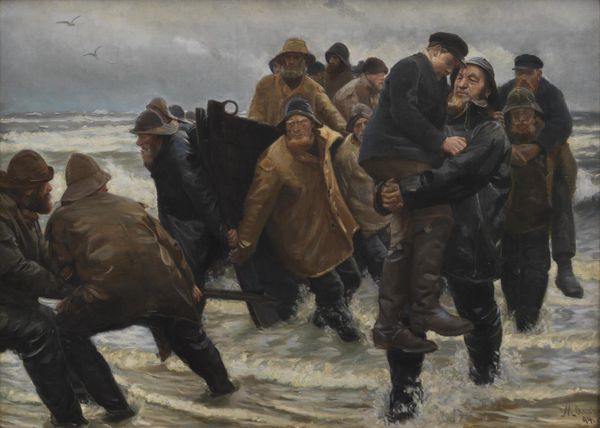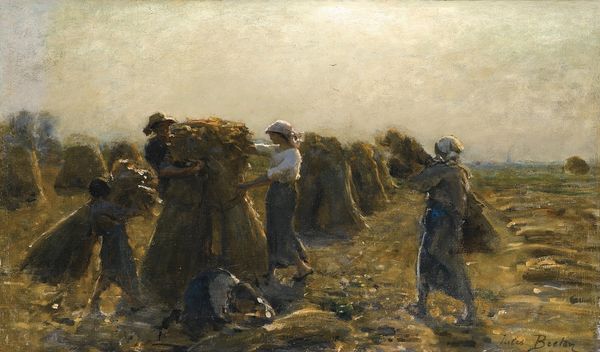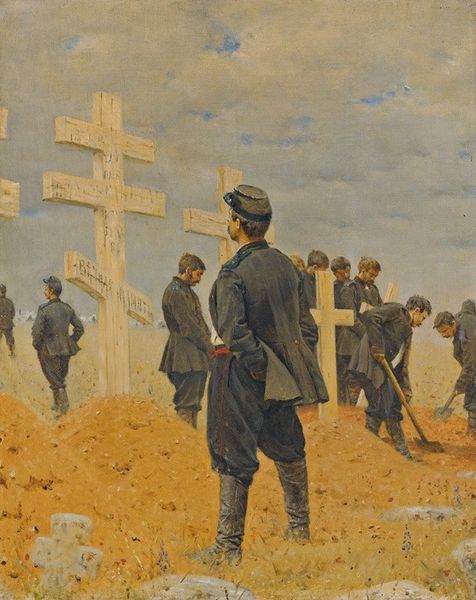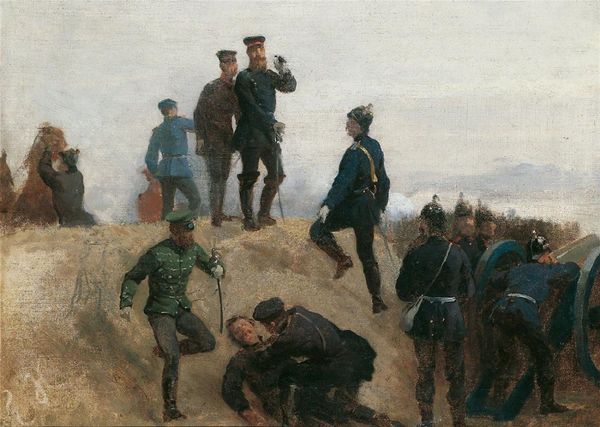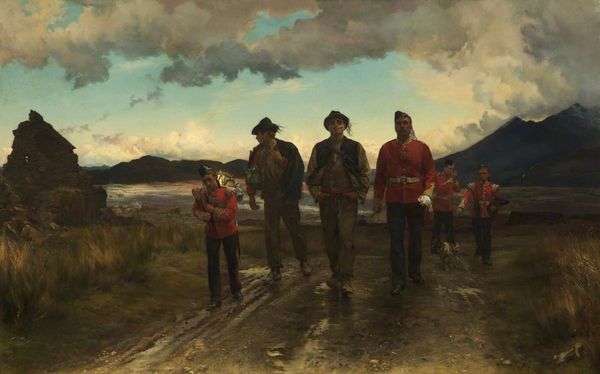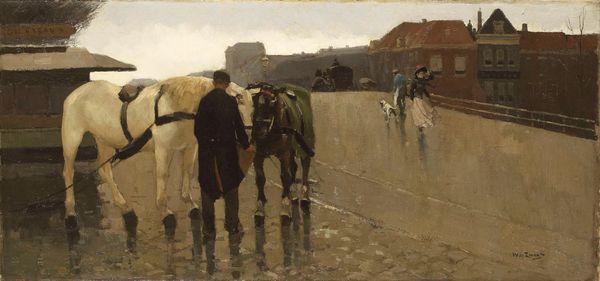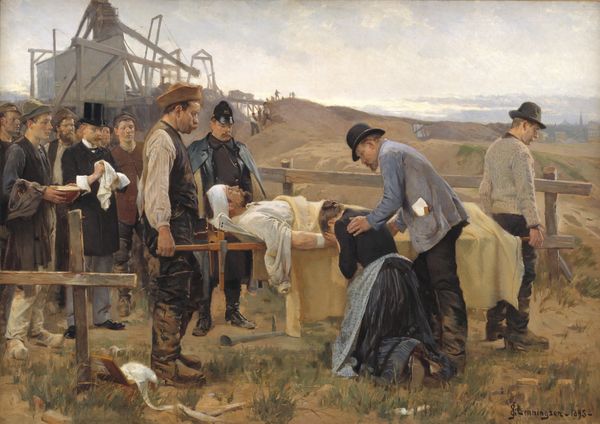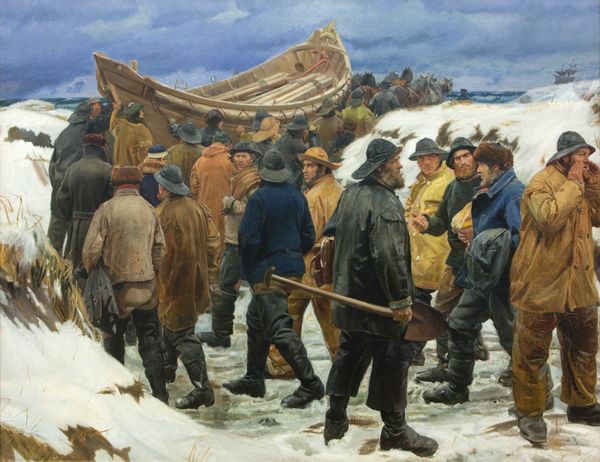
Copyright: Public Domain: Artvee
Curator: Winslow Homer’s "Prisoners from the Front," painted in 1866 with oil on canvas, captures a poignant moment during the American Civil War. What's your initial impression of this artwork? Editor: The restrained palette of earth tones gives it a somber, contemplative feel. It’s stark, yet there is something profoundly human in the captured expressions. Curator: Absolutely. Homer crafted this after witnessing the war firsthand as an artist correspondent. Consider the materiality of the scene; we're looking at the aftermath, not a glorious battle, but the subdued reality of surrender. The Confederate soldiers, stripped of their arms, stand before a Union officer. It speaks to the process of dehumanization inherent in conflict, right down to the confiscated weaponry discarded on the ground. Editor: Notice how Homer organizes the composition with stark geometry: the contrast of the linear disposition of the Confederate soldiers versus the single erect figure of the officer facing them, the horizontality of the landscape against their vertical bodies, and how all eyes lead towards that singular figure. Curator: True, but how that compositional formality interacts with the context of production is what really interests me. The prisoners are presented not as romantic heroes, but as weary individuals, illustrating the war's toll on the common soldier. Their clothing is worn, their postures dejected—consider also that these were largely conscripted men facing industrial armies for the first time. This isn’t about individual bravery, it's about systems grinding people down. Editor: Yes, but within that grim scene, consider how Homer has rendered the faces. The Confederate officer confronts his captor, defiant almost, engaging the officer eye-to-eye. Even their clothes seem meticulously realized. Curator: This realism stems from Homer's engagement with photography as reference. The rise of photography deeply impacted painting techniques. But what's truly striking is how Homer resists idealization. It’s a portrait of labor, endurance, and the material realities of war. He makes us question what happens to these people afterwards. What will their labor become now? Editor: Ultimately, Homer offers a space to examine how individuals retain their humanity. In terms of form, I see it as a potent example of how carefully composed structure can speak of complex themes such as identity and social conflict. Curator: Precisely, a formal arrangement to capture a precise historic moment! The image lingers because it captures a moment of reckoning and re-negotiation that comes after war. Editor: Indeed. “Prisoners from the Front” encapsulates a moment of defeat.
Comments
No comments
Be the first to comment and join the conversation on the ultimate creative platform.
